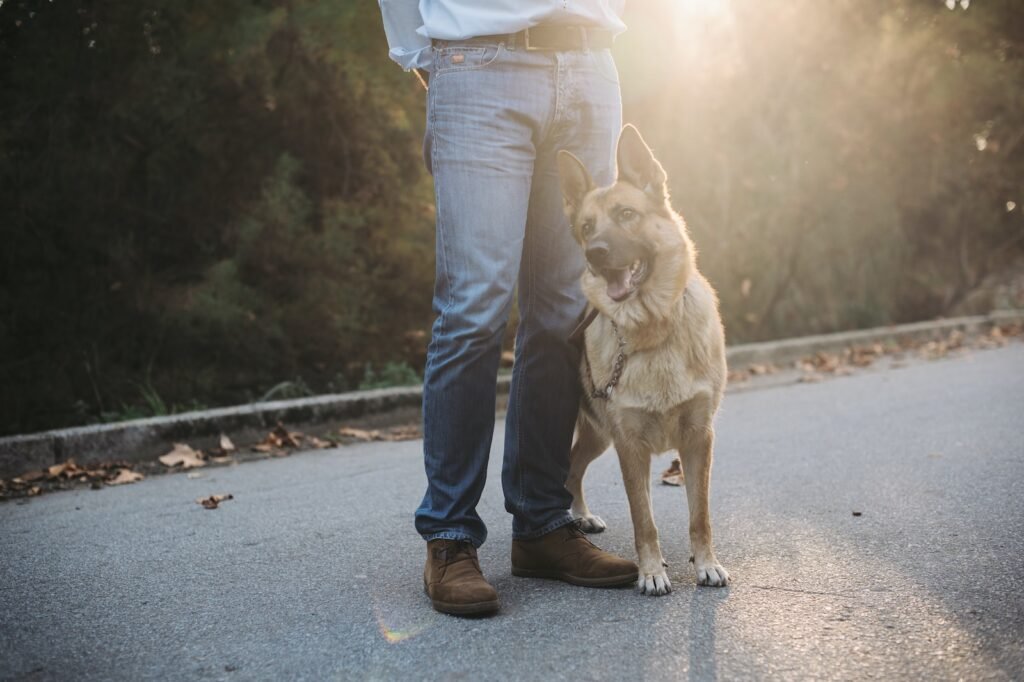How to teach basic obedience commands to your dog (sit, stay, come, etc.)
Are you tired of your furry friend running rampant around the house? Or perhaps your dog just can’t seem to sit, stay, or come when called. Whatever the case may be, teaching basic obedience commands to your pup is essential for a harmonious and enjoyable relationship between owner and pet. Not sure where to start? Don’t fret!
In this blog post, we’ll walk you through step-by-step how to effectively teach basic obedience commands like “sit,” “stay,” “come,” and more – all while having fun with your furry companion. So grab some treats (for both you and Fido!), set aside some time, and let’s get started!
What is obedience?

Obedience is a very important skill for any dog to have. It not only teaches them how to behave properly, but it can also help keep them safe when traveling or when out in public. Obedience training can be done in a variety of ways, and there are a number of command words that work well for different situations. Here are five basic obedience commands that you can start teaching your dog:
- Sit : When teaching your dog to sit, use the word “sit” followed by the cue word “down” or another specific command such as “stay.” For example, say “sit” and then give the cue word “down.” Once your dog is seated, praise them enthusiastically. Repeat this exercise several times until your dog is reliably sitting when requested to do so.
- Stay : To teach your dog to stay, use the same commands as for sit: say “sit” followed by the cue word “down” or another specific command such as “stay.” After your dog sits down, give them the cue to stay by saying “stay.” Once they are staying, praise them lavishly! Repeat this exercise several times until your dog is reliably staying whenever asked to do so.
- Come When Called Name : To teach your dog to come when called name, start by telling them to Sit (by saying sit first) and then giving them their recall cue word such as “here” or “duh.” When your dog sits, say “come” and then Guide them back to you, continuing to say the recall cue word until your dog has returned to your side. Reward them lavishly for following your instructions.
- Down : To teach your dog to Down (lie down), start by telling them to Sit and then giving the cue word “down.” After they sit, give the cue word “down” again. When they are in the down position, praise them and give them a treat. Continue this exercise several times until your dog is reliably lying down when requested to do so.
What are the basics of obedience training?

obedience training is an essential tool for successful pet-dog relationships. Not only will a well-trained dog obey your commands quickly and consistently, but he’ll also be protective of your property and comfortable around strangers. In this article, we’ll discuss the basics of obedience training, including the types of commands you should teach your dog, how to train them, and what rewards to give your pet for good behavior.
Before beginning obedience training, it’s important to understand the goals of training; not all dogs respond to punishment in the same way. Some are goal-oriented (they want to please their owner), while others are focussed on avoiding negative events. If you have a reactive dog or love one who is hard to discipline, start by learning about that animal’s personality type and using techniques based on that information instead of trying to force your dog into Compliance School30167 shape.
You should begin by teaching the basics – sit, stay, come – and then Gradually adding more complex commands as your dog demonstrates understanding and apparent eagerness to please. You might initially reward your pet with treats when he obeys a simple command like sit or come; as he gains more skills and knowledge, you may start rewarding him with toys or other activities that reinforce good behavior. Negative punishment (punishing your pet when she doesn’t obey) isn’t typically effective with most breeds of dogs; if she wants something bad enough (like dinner), she’ll eventually figure out that ignoring her master will result in a better treat.
Remember to be patient – it can take weeks or even months for your dog to learn basic obedience commands, but the rewards (calmness and a Healthy Relationship) are well worth the effort!
How to teach your dog basic obedience commands
If you’re looking to teach your dog some basic obedience commands, there are plenty of resources out there that can help. There are many different obedience training methods, so it can be difficult to choose the right one for your canine friend.
Although some methods work better than others for different dogs, most involve providing consistent and unambiguous direction. Start by installing a basic obedience routine in your home, which will include a sit, stay, come, and down command. Once your dog knows how to respond to these basics, you can start teaching more advanced commands.
To begin with, make sure that you’re providing good reinforcement for correctly performing the commands. This means praising your dog when they obey (or refrain from obeying) the commands and giving them something special (like a treat or game) as a bonus for good behavior. Helping them understand why certain behaviors are rewarded can also be helpful – explaining that coming when called is polite because it means no fighting or other disruptions will happen nearby is an easy way to start training this important concept into their heads!
Rewards for good behaviour
Dogs can benefit from obedience training in order to have a reliable partner on walks and in other activities. Basic obedience commands include sit, stay, come, and down. Here are some tips for teaching these commands:
- Start by teaching the dog the sit command. When you first cue your dog to sit, make sure they are sitting with their heels in front of them and their tail tucked behind them. Reward your dog when they comply with the sit command by giving them treats or petting them. Repeat this step until your dog is reliably sitting when requested.
- Teach the stay command next. When you first introduce the stay command, ask your dog to stay where they are while you do something else (ie go to the kitchen). Again, provide positive reinforcement when they comply by rewarding them with treats or petting them. As your dog becomes more obedient, you may also want to start adding distance between yourself and your dog while they are still obeying the stay command – gradually increasing until your dog is staying put even when you’re several feet away from them!
- Next, teach the come command. After introducing the come command and providing positive reinforcement for following it, ask your dog to come back to you one time – if he/she comes back immediately after being called ‘come’, give him/her a little extra praise and treat as a reward! Gradually increase the time interval between calls for ‘come’ until your dog is coming back immediately upon hearing the command.
- Finally, teach the down command. When teaching the down command, be sure to have your dog on a sturdy surface (like a ground mat) before you begin. With your dog correctly positioned on the surface, cue them to ‘down’ by pointing at their bottom and saying ‘down’. When your dog lowers their bottom to the ground, give them a treat and continue repeating the command until they are down consistently.
Punishment for bad behaviour
One of the most important things you can do to create a well-behaved dog is to establish basic obedience commands. This will help your dog understand what is expected of them, and lead to less misbehaviour. There are many different obedience commands available, and each needs to be taught in a specific way in order for your dog to learn it correctly. Here are some tips on teaching basic obedience commands:
1) Make sure you have a good foundation of training before you start teaching new commands. Your dog will be more likely to listen if they know what’s expected of them in situations where disobedience might result in negative consequences.
2) Be consistent – always use the same words and gestures when training your dog, and avoid using highly-charged or emotional language. Using treats as rewards will also help keep your dog motivated.
3) Use smaller doses of reinforcement than you would with more complex commands – once your dog has learned the basics, you can begin using bigger rewards such as petting or dinner time privileges.
4) Use positive reinforcement – rewarding your dog with praise and treats when they obey is a much better motivator than punishing them for bad behaviour. If they get into mischief again soon after obeying a command, give them a light tap on their hindquarters instead of giving them a hard bark or scolding sentence.
Conclusion
Teaching basic obedience commands to your dog is an important step in training them. Not only will this help you better control your pooch, but it can also prevent them from becoming disobedient in other areas of their life. There are a few things that you will need to do in order to start teaching these commands, and we have provided the steps below for you. Be patient with your dog – trial and error is a great way to teach them new skills, and eventually they’ll get it!






